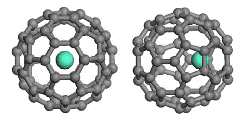Department of Chemistry
Document Type
Article
Date of this Version
2009
Abstract
Lamellar structures, consisting of alternating inorganic layers separated by organic moieties, have attracted much attention over a wide range of applications, such as polymer-clay composites, rheology control, and optoelectronic devices. Organosilanes are ideal candidates for such efforts due to their ability to self-assemble and the intrinsic hybrid configuration of organic/inorganic moieties. Yet, the main emphasis has been focused on alkylsilane, where an alkyl group is linked with a silane terminal, i.e., R-SiX3 (R is alkane and X can be halogen or alkoxy). Construction of stacked monolayers of alkylsilane through chemisorption is possible. The demonstrated pathway usually takes place after the monolayer surface is converted to a hydroxylated one. This conversion can be realized by a chemical modification of a nonpolar terminal group to a hydroxyl group. Alternatively, Huo and Parikh found that long-chain alkylsilane could form a lamellar solid or stacked bilayer through solvophobic and van der Waals interactions. Kuroda reported the chain-length dependence study (CnH2n+1Si(OEt)3, n = 12, 14, 16, and 18) of the bilayered structure. Maoz further developed a protocol to grow stacks of bilayers by manipulating the interactions in a stepwise fashion. Collectively, all these studies concluded that the solvophobic and the van der Waals interactions between molecules with long chains were the main driving forces for such a complex assembly. Due to the rather weak interactions between alkylsilanes, the resulting assemblies are usually amorphous and instable at high temperatures; the issue of disturbed packing, as well as difficulties in chemical functionalization of alkyl chains, limits the potential applications for organosilane lamellae.



Comments
Published in J. AM. CHEM. SOC. 2009, 131, 900–901.